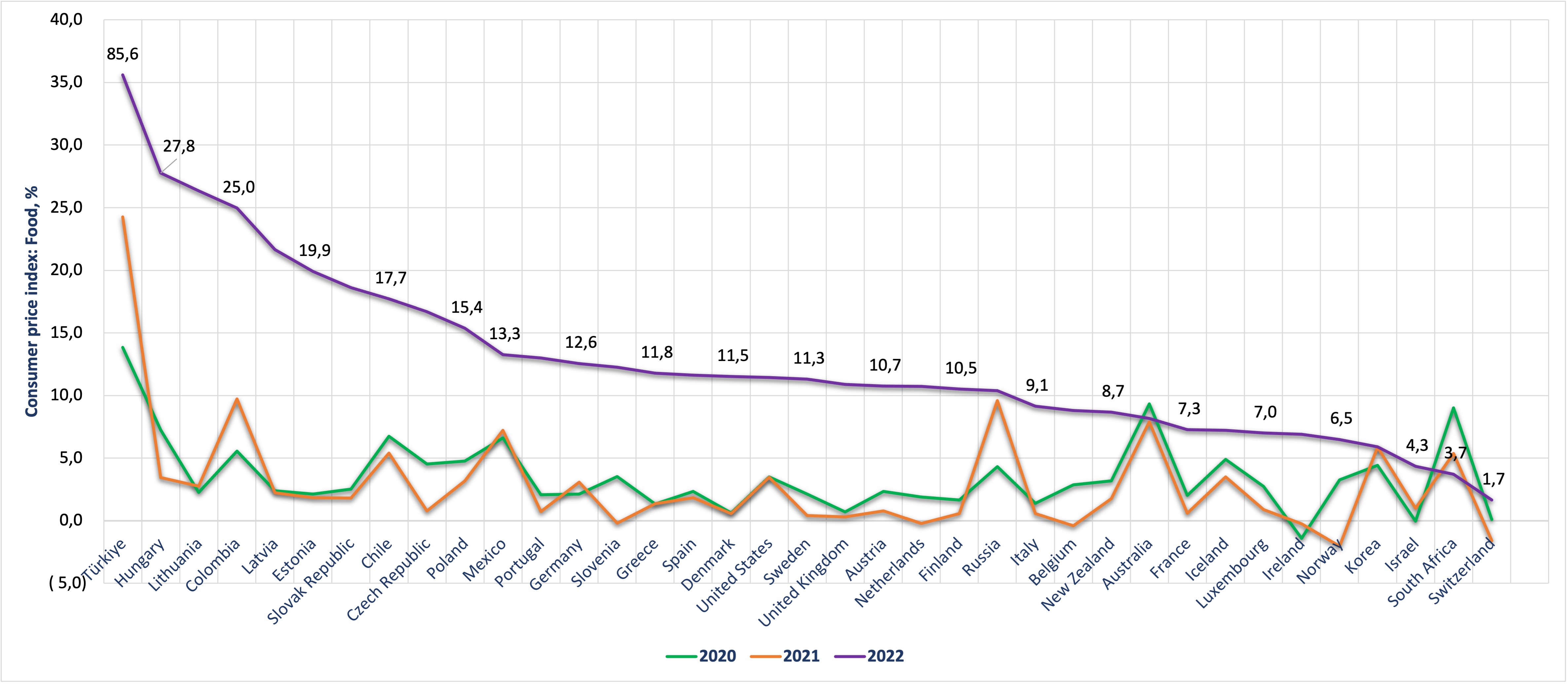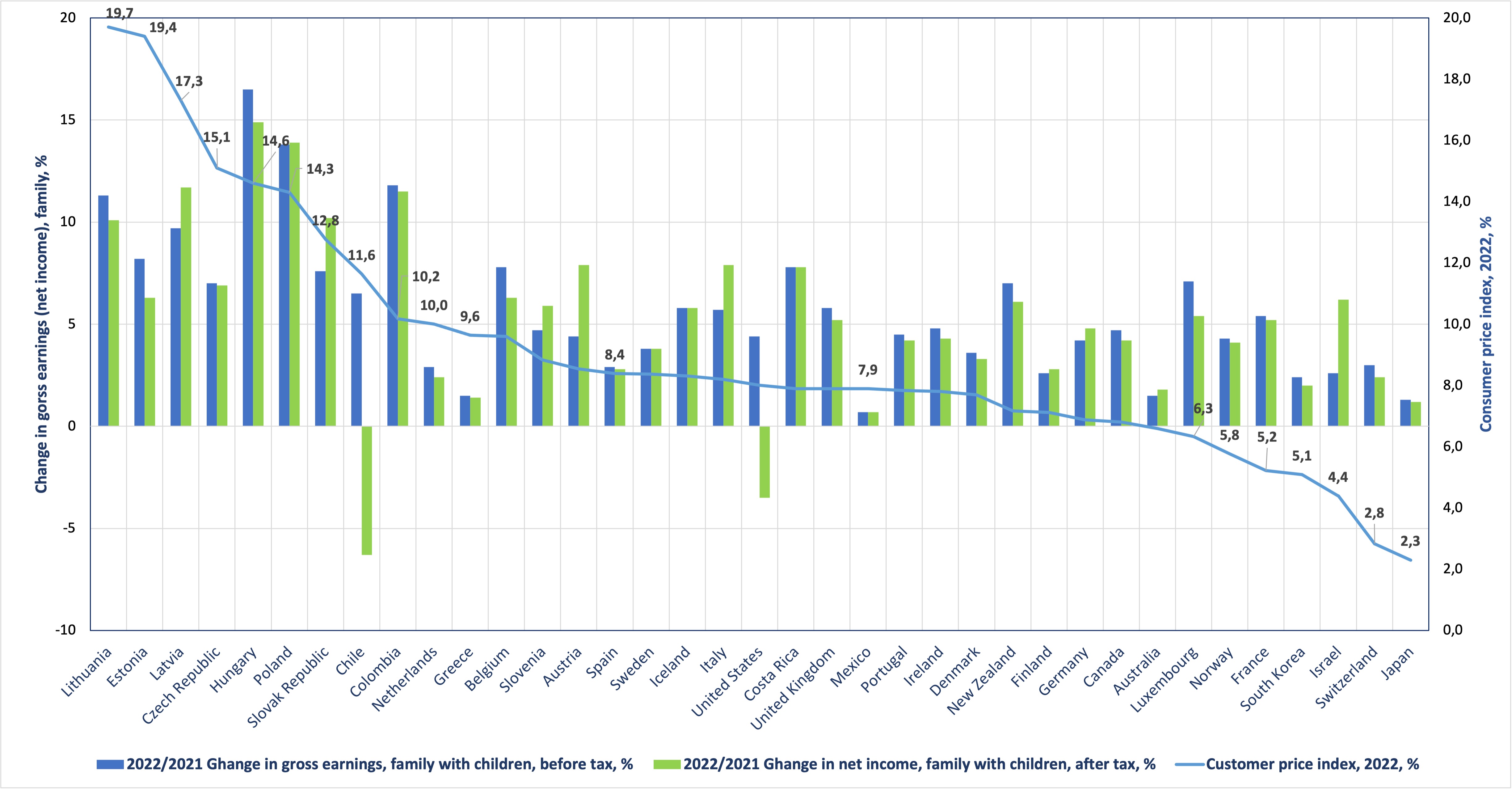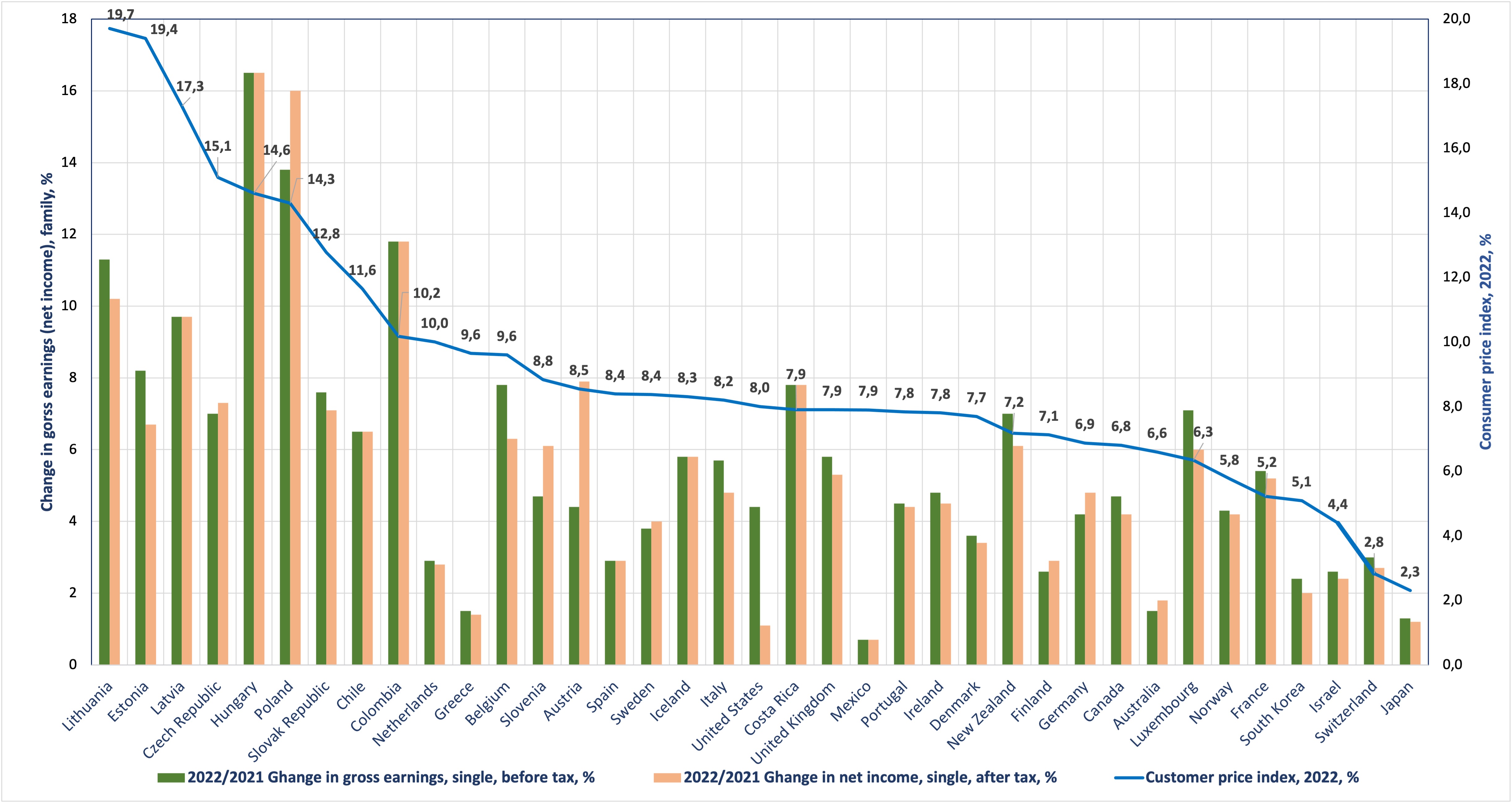Overviews
Author: Natalia Grishchenko
May 04 2023
Brief Overview of Inflation 2022
Inflation in 2022 has become the most significant socio-economic indicator, which, in turn, has affected the incomes of citizens around the world. In this brief overview, we present our notes on some aspects of last year’s inflation:
(1) inflationary processes continued in 2022 and their beginning in 2020 is obviously associated with additional monetary assistance to the population in connection with the Covid-19 pandemic,
(2) the largest contributor to inflation in 2022 was the increase in electricity and gas prices for households caused by the energy crisis last year,
(3) measures to support the income of families with children as the most vulnerable groups were taken by the governments of a number of countries in 2022,
(4) the interest rate as an instrument of monetary policy was applied in most countries, exceeded the inflation rate and, obviously, was the main factor in limiting inflation in 2022.
We use the inflation rate measured by the national consumer price index (CPI), which represents the annual change in the prices of goods and services purchased by groups of households.
Consumer prices have been rising since 2020 and continued to rise in 2021 with its peaks in 2022. Trends in CPIs by country in the Figure 1 below show an increase in the inflation growth trend over the past 3 years. One of the reasons for this, obviously, can be considered the monetary support to the population during the Covid-19 pandemic.

Fig. 1. Consumer prices indices, 2022-2020 and interest rate, 2023, %
Source: OECD, stat.go.jp, bcc.fi.cr, rosstat.gov.ru, stat.gov.cn
In most of the observed countries, as also shown in Figure 1, the corresponding interest rate as a measure of reducing inflation was above or close to the inflation rate, which had the expected positive effect.
The largest contributor to inflation in 2022 is the CPI for household electricity, gas and other fuels. Despite a number of negative values for electricity and gas prices in 2020, subsequent years showed a significant increase, as shown in Figure 2. The current situation of production and energy prices allow us to expect continued moderate growth in electricity and gas prices for the population.

Fig. 2. Consumer prices indices on electricity, gas, and other fuels, 2022-2020 and interest rate, 2023, %
Source: OECD, rosstat.gov.ru
The inflation on food contributed less to overall inflation in 2022 compared to electricity and gas prices. This should take into account the large share of food expenditures in total household expenditures, including households that are more vulnerable in terms of income. In a crisis, this leads to additional income inequality. In turn, the uneven pressure of declining incomes on different groups of households in a crisis requires support measures from the state. The main trends in food prices in 2020-2022 are shown in Figure 3.

Fig. 3. Consumer prices indices on food and non-alcoholic beverages, 2022-2020 and interest rate, 2023, %
Source: OECD, rosstat.gov.ru
Inflation affects incomes and reduces the consumer opportunities of the population. Some countries were able to increase the income of their citizens above inflation in 2022. The changes related with this are presented in Figures 4-5. Several governments have also taken steps to support the incomes of certain household groups as families with children. In this case, we can distinguish between an increase in income before and after taxes. However, in only a small number of countries, families with children had a net income higher than gross earnings after taxes in 2022. This means that part of the “support” has been inefficiently redistributed through tax rules. The situation is the same for single, who have a surprisingly better position compared to families regarding income taxation in 2022 in the context of inflation.

Fig. 4. Change in gross earnings (net income), family, before and after tax and CPI, 2022, %
Source: OECD

Fig. 5. Change in gross earnings (net income), single, before and after tax and CPI, 2022, %
Source: OECD
The comments presented on inflation 2022 are general and require a deeper analysis of their short- and medium-term social and economic implications.
Citation:
Grishchenko Natalia. Brief overview of inflation 2022. https://accorde.pl, 2023.05.04.